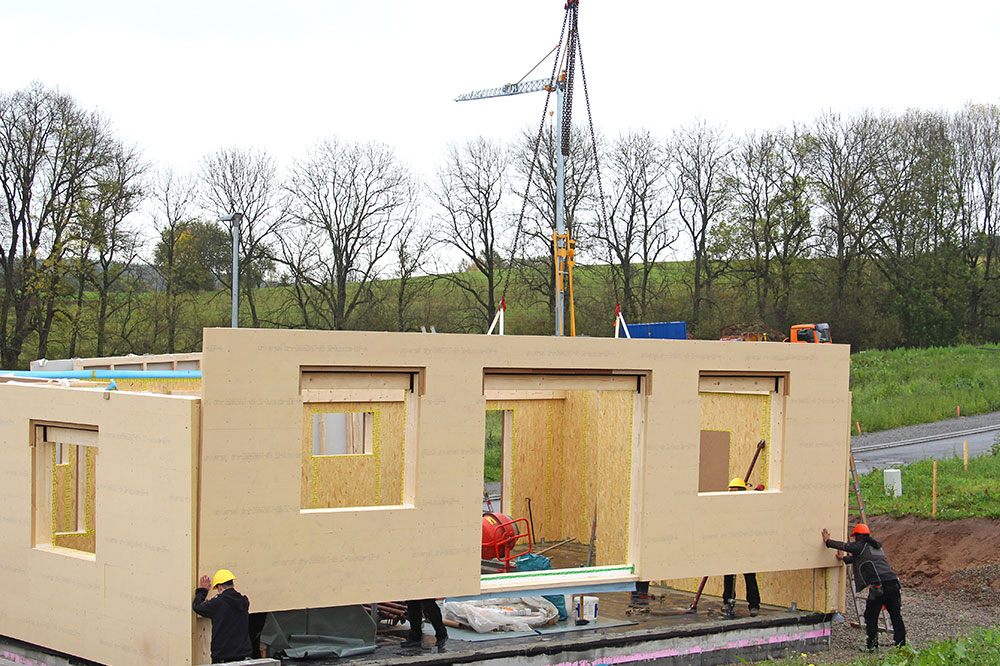Factors Influencing the Buying and Selling of Prefabricated Homes
When looking for a new home, you typically have two alternatives: buy a house or build one. However, if you want to build a house, you can think about prefabricated houses. Unsold prefabricated homes are manufactured in a factory to be transported to a construction site and put together there. These residences can be produced more quickly and cost-effectively than conventional site-made homes since they are built in a controlled factory setting.

Reasons why prefabricated homes can be easily available
Prefabricated homes may not sell for a number of reasons, some of which include:
Lack of demand
Prefabricated homes may not find enough purchasers if there is little demand for new dwellings.
Competition from other housing alternatives
Prefabricated dwellings may find it difficult to compete if there are many other housing options, such as conventional site-built homes, modular homes, or apartments.
Cost
These constructions could be more expensive than other housing types, which might reduce consumer interest in them.
Financing
It could be challenging for purchasers to get financing for a prefabricated home, which might reduce the pool of potential buyers.
Various types of unsold prefabricated houses
Here is a list of different types of unsold prefabricated homes, each with their design, benefits, and features.
Ranch-style homes
Ranch-style homes are single-story structures with an open floor layout and a low roofline. Usually, they have a huge living space, bedrooms, and a kitchen.
Cape Cod-style homes
Homes in the Cape Cod architectural style typically have steep rooflines and dormer windows. They frequently have a front porch and an inviting interior in the cottage style.
Modern-style homes
Homes in the modern style have a sleek, contemporary design with clear lines, basic furnishings, and open floor plans. They frequently include smart home technology and materials that are energy efficient.
Tiny houses
These are tiny, compact residences are built to make the most of available space and to have the least negative influence on the environment. They frequently have a lofted bedroom, a Murphy bed, or built-in storage and are smaller than 500 square feet.
Multi-family homes
Prefabricated homes intended for many families or tenants are called multi-family residences. They can range from duplexes to bigger apartment buildings, and developers frequently choose them if they want to offer cheap housing options.
Factors affecting the price of an unsold prefabricated house
Different factors affect the price of unsold prefabricated houses. Some of them are:
Location
This is your top priority when discussing the prices for unsold prefabricated houses. Homes in high-demand neighborhoods with upscale amenities could cost more than those in less desirable places. Based on the particulars of your region, there can also be extra expenses, including those associated with excavation, shipping, permits, land development, and sales tax.
Size
It’s rather simple to calculate the amount required to buy a property based on its size once you’ve decided on a price per square foot. Here, simple arithmetic is used: You multiply the square footage you intend by the price per square foot.
Customization
The degree of individualization and customization can have an impact on the cost of a prefabricated home that hasn’t been sold. Highly customized homes with unique features and finishes typically cost more than regular versions.
Material quality
The cost of a home can be affected by the quality of the materials used in its construction. Homes designed with premium components, including energy-efficient windows and doors, may cost more than homes built with less expensive components.
Finish level
The finish level determines the completeness and quality of interior and exterior finishes. Homes with more high-end features, such as granite countertops and hardwood floors, typically cost more than those with simpler features.
Market variables
Aside from supply and demand, interest rates and economic circumstances can also impact the price of unsold prefabricated homes.
Things to consider before settling unsold prefabricated house deals
Various fabrication and installation techniques are used in unsold prefabricated houses. Before purchasing it consider the following factors:
Site preparation
The installation site must be ready before the prefabricated home is delivered. This could entail preparing the site, laying a foundation, and connecting utilities.
Delivery and installation
You must arrange the prefabricated house’s delivery and installation with the manufacturer. The cost of transportation and installation should be made clear, and all required licenses must be secured.
Customization
Check if the prefabricated home may be modified to meet your unique demands and preferences. This could involve changing the home’s design, materials, and features.
Financing
Consider conventional mortgages, personal loans, or financing options offered by the manufacturer when looking into finance possibilities for buying an unsold prefabricated home.
Warranty and maintenance
Recognize the manufacturer’s warranty and the house’s maintenance needs. Be sure to account for any potential ongoing maintenance and repairs.
Local regulations
Look into any zoning restrictions or municipal rules affecting your ability to erect a prefabricated home on the selected site.
Benefits of unsold prefabricated house dealerships
One can get various benefits by getting unsold prefabricated house dealerships:
Cost savings
Unsold prefabricated homes can be purchased by dealerships at a reduced price due to attractive deals, resulting in consumer savings. Dealerships can then pass on these savings to customers, lowering the cost of prefabricated homes.
Model variety
To meet the needs and budgets of various buyers, dealerships can provide a wide range of models, from entry-level starter houses to luxurious models.
Expertise and support
Dealerships frequently employ a staff of specialists who can offer direction and assistance during all phases of the purchasing process, including site preparation, financing, and installation.
Rapid construction
Unsold prefabricated homes can be built swiftly and effectively, frequently in days or weeks, allowing customers to move into their new homes sooner.
Getting an unsold prefabricated house from a reputed dealership can be affordable, although that depends on the size and type of the home you wish to purchase. Consult any trusted dealer in your neighborhood to get the best choice for your needs.